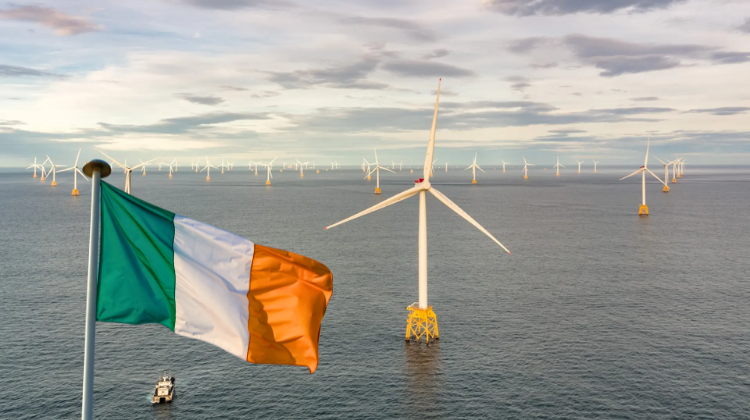Ireland will not meet its target of installing 5 GW of offshore wind capacity by 2030, according to the newly released Offshore Wind Action Plan developed by Wind Energy Ireland (WEI). The warning was issued during the Offshore Wind Conference 2025, held on 27 May at the Clayton Burlington Hotel in Dublin, gathering key players across the industry.
“This plan is about restoring confidence — at home and abroad — in Ireland’s offshore wind potential,” states Noel Cunniffe, CEO of WEI. He emphasises, “The industry stands ready to deliver, but it cannot do so without political urgency and whole-of-government leadership.”
Four strategic pillars and 24 priority actions to shift course
The plan lays out a clear roadmap to support projects already in development and create a long-term framework to de-risk investment and attract private capital. The 24 recommended actions are structured around four strategic pillars, aimed at accelerating planning, unlocking infrastructure, and providing certainty to investors.
1. Delivering Phase One projects
Although Ireland held its first offshore auction in 2023, awarding over 3 GW of new capacity, and a second auction is planned for 2025, no project has yet broken ground. Significant delays in the planning process, especially due to extensive information requests from An Bord Pleanála, could defer final decisions until at least 2026.
“What we decide to do in the next 12 months will determine whether we have boats in the water by 2030 and whether the 2040 targets remain within reach,” warns Cunniffe.
2. Maximising the South Coast DMAP and progressing Tonn Nua
The plan stresses the urgency of launching the 900 MW Tonn Nua site auction on time and ensuring clarity regarding Sites Lí Ban (B), Manannán (C) and Danu (D) under the South Coast Designated Maritime Area Plan (SC-DMAP).
“We need to remove barriers, resource delivery teams, and create certainty for investors,” Cunniffe insists. WEI proposes the formation of joint working groups involving DECC, EirGrid, the CRU and industry stakeholders to maintain progress and resolve bottlenecks.
3. Accelerating the National DMAP
WEI urges the Government to immediately begin work on the National Designated Maritime Area Plan, which should include both fixed-bottom and floating wind zones, and be finalised by 2027. Given the complexity of this task, WEI recommends outsourcing the process to external experts to ensure delivery on schedule.
The plan also advocates a delivery-oriented development model, ensuring that maritime consent and planning permissions are secured before auctions, while also incorporating strategies to co-locate industrial energy demand with offshore generation zones.
4. Building the enablers: ports, grid and demand
WEI emphasises that Ireland’s lack of port infrastructure could jeopardise offshore wind expansion. Without swift investment in at least two major ports, projects may lack the logistical support needed to proceed, even from non-Irish ports, given increasing congestion across Europe.
In parallel, WEI calls for 1 GW+ industrial demand strategies along the south-east coast and other regions aligned with offshore development. It also urges the development of a national grid plan considering interconnection, offshore bootstraps and dedicated green energy parks.
A direct call for Government action
While acknowledging past policy progress, WEI insists that without adequate resourcing, staffing and execution, these advances will not translate into real projects. The plan demands reinforced capacity at both national and local levels across all permitting and planning authorities.
“We know what needs to be done. The steps we propose today are not theoretical – they are essential,” asserts Cunniffe. “We are now in a decisive window. If we want offshore wind to lower bills, increase energy security and reduce emissions, we must act now.”
Strategic context: Ireland’s Maritime Spatial Map
Complementing the plan, the recently published Strategic Maritime Map of Ireland, developed by Strategic Energy, provides an integrated vision of offshore development zones, aligning maritime space planning with infrastructure, shipping corridors and wind potential. This tool will be critical in synchronising offshore energy development with national decarbonisation goals.































